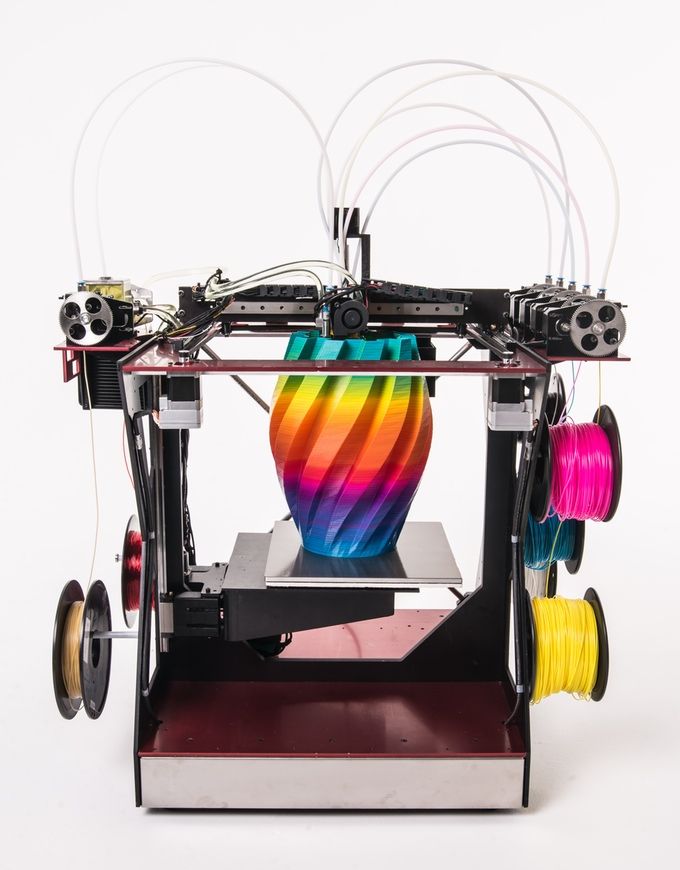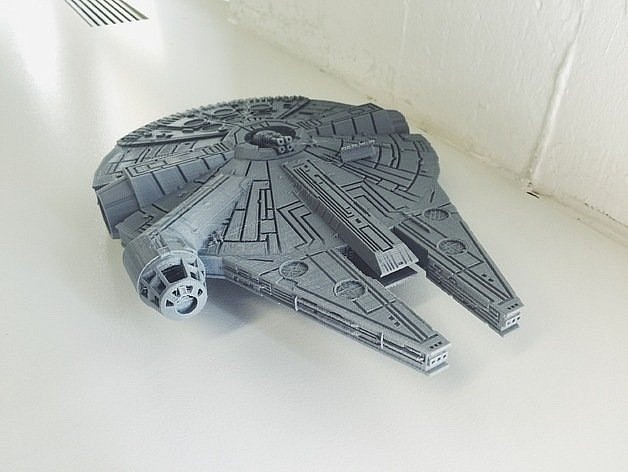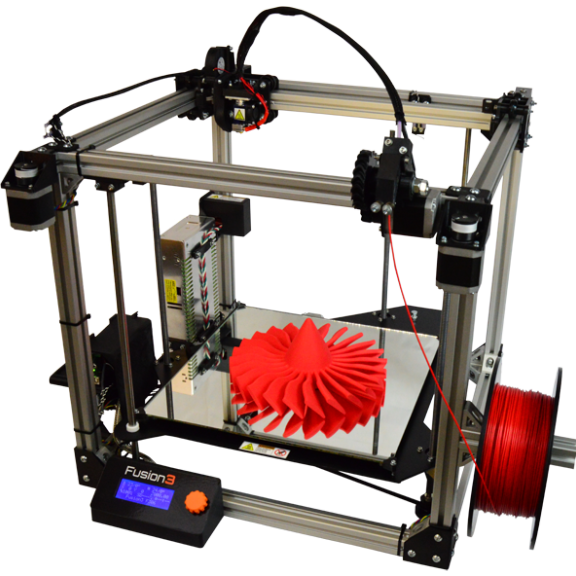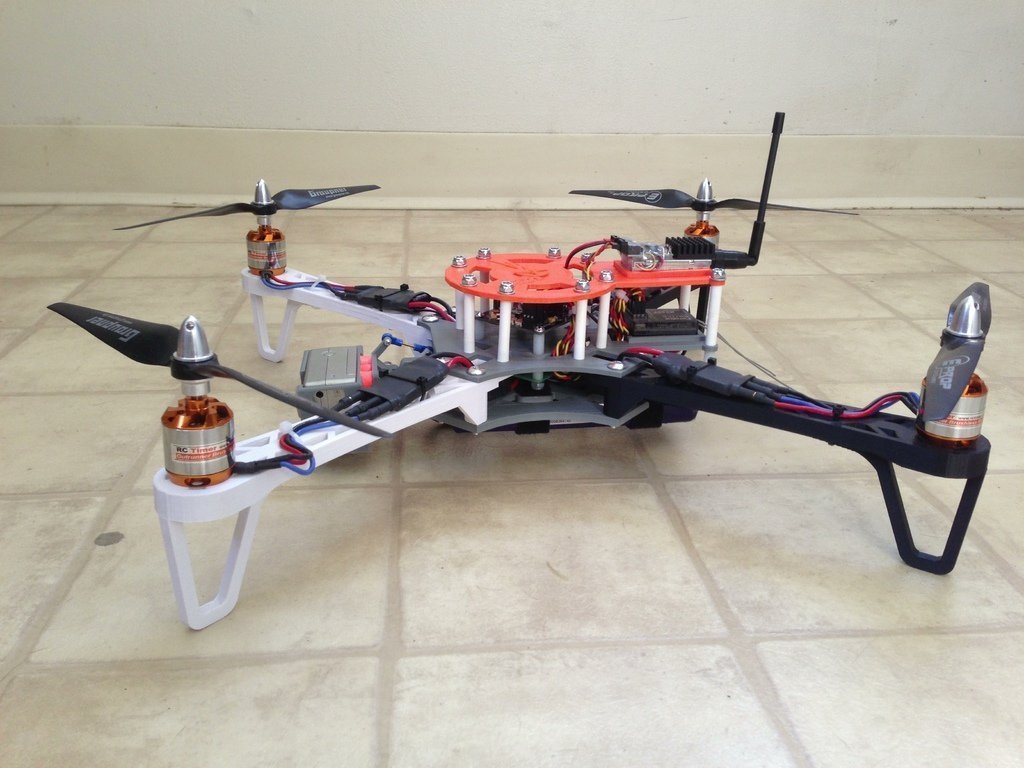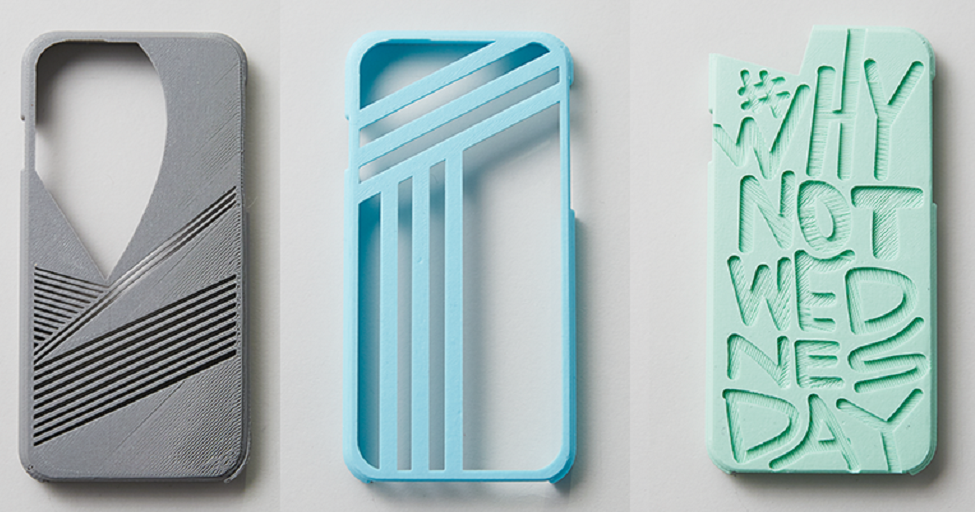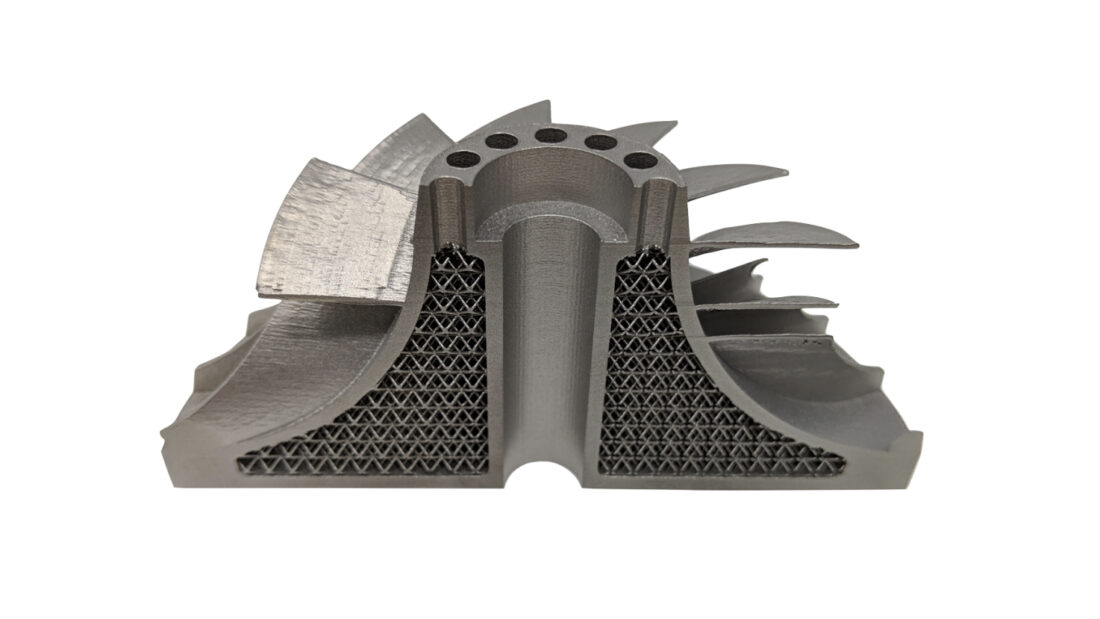Tiko unibody 3d printer
The Tiko Printer: What Happens When You Innovate Too Much
Sometime in the very distant future, the Universe will become the domain of black holes. Energy and entropy will be compressed into minuscule quantum fluctuations. Even in this domain of nothingness, there will still be one unassailable truth: you should not buy a 3D printer on Kickstarter.
We’re no strangers to failed 3D printer crowdfunding campaigns. Around this time last year, backers for the Peachy Printer, an inordinately innovative resin printer, found out they were getting a timeshare in Canada instead of a printer. This was unusual not because a crowdfunding campaign failed, but because we know what actually happened. It’s rare to get the inside story, and the Peachy Printer did not disappoint.
For the last few months, we’ve been watching another crowdfunding campaign on its long walk to the gallows. The Tiko 3D printer is another 3D printer that looks innovative, and at the time of the crowdfunding campaign, the price couldn’t be beat. For just $179 USD, the backers of the Tiko printer would receive a 3D printer. Keep in mind the Tiko launched nearly two years ago, when a bargain-basement printer still cost about $400. Fools and money, or something like that, and the Tiko 3D printer campaign garnered almost three million dollars in pledges.
Now, after almost two years of development, Tiko is closing up shop. In an update posted to the Tiko Kickstarter this week, Tiko announced they are laying off their team and winding down operations. It’s a sad but almost predictable end to a project that could have been cool. Unlike so many other failed crowdfunding campaigns, Tiko has given us a post-mortum on their campaign. This is how the Tiko became a standout success on Kickstarter, how it failed, and is an excellent example of the difference between building one of something and building ten thousand.
Why the Tiko Was a Hit
The Tiko printer was an easy sell. All you had to do was look at your favorite tech blog and see someone was selling a 3D printer for less than one hundred dollars.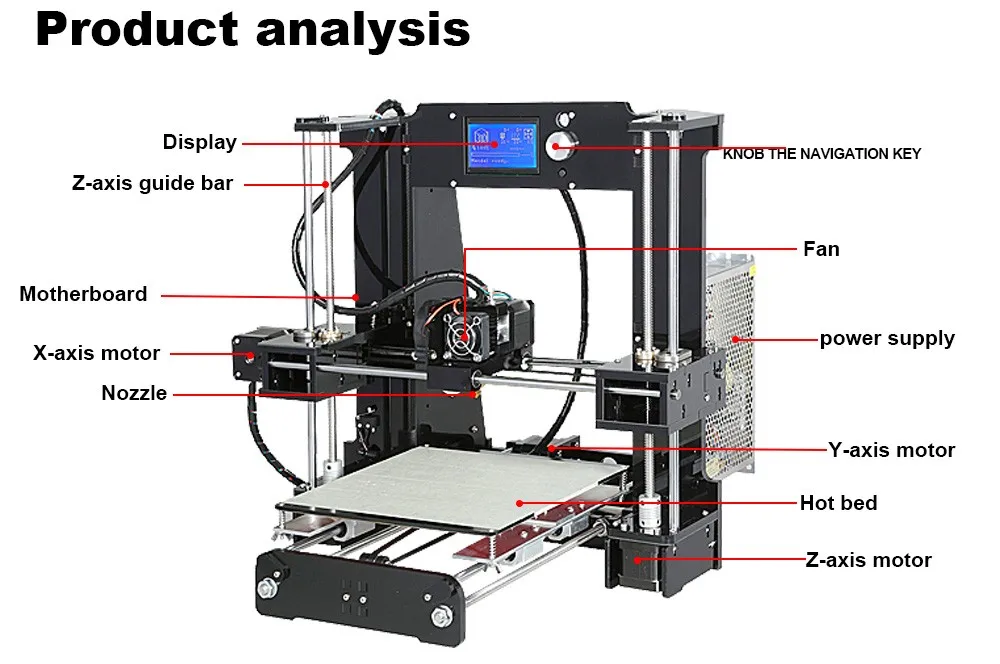 Yes, that was the super early bird price, but that’s cheap for a 3D printer. In 2015, unimaginably so. The regular price, and what non-early bird Kickstarter backers paid, was only $179 USD. Even today, with the machinations of dozens of factories in China, this is a very inexpensive price point. In fact, only with the upcoming release of Monoprice’s $150 delta printer will we see a printer that is as capable while still being this inexpensive.
Yes, that was the super early bird price, but that’s cheap for a 3D printer. In 2015, unimaginably so. The regular price, and what non-early bird Kickstarter backers paid, was only $179 USD. Even today, with the machinations of dozens of factories in China, this is a very inexpensive price point. In fact, only with the upcoming release of Monoprice’s $150 delta printer will we see a printer that is as capable while still being this inexpensive.
The astonishing economy of the Tiko leads to an obvious question. How did the Tiko team plan to build a 3D printer and send it out the door for less than $200? Even today, sourcing and building the most bare bones i3 clone will cost more than that. In 2015, the costs were even higher.
Tiko’s unibody construction. By building a linear motion system into the enclosure, Tiko significantly reduced the cost of their bill of materials.The answer comes from something that sounds like it’s glomming onto Apple ad copy: unibody construction. The body of the Tiko is a single part with an integrated c-channel used as the linear rails of this delta bot. This unibody construction is, quite simply, ingenious. If you’ve ever assembled a RepRap Mendel, or any of the other threaded rod printer monstrosities from back in the day, you know the frame of a 3D printer is what makes or breaks the build. By using an extrusion with integrated rails, the Tiko team brought the cost of a frame down while making their assembly easier. From a manufacturing standpoint, Tiko’s unibody construction is brilliant, and we won’t be surprised when we see another delta bot with the same sort of enclosure.
The body of the Tiko is a single part with an integrated c-channel used as the linear rails of this delta bot. This unibody construction is, quite simply, ingenious. If you’ve ever assembled a RepRap Mendel, or any of the other threaded rod printer monstrosities from back in the day, you know the frame of a 3D printer is what makes or breaks the build. By using an extrusion with integrated rails, the Tiko team brought the cost of a frame down while making their assembly easier. From a manufacturing standpoint, Tiko’s unibody construction is brilliant, and we won’t be surprised when we see another delta bot with the same sort of enclosure.
At its very core, Tiko was innovative. This is a 3D printer that was built around standardized manufacturing processes. Yes, building a ‘unibody’ 3D printer will require a significant capital investment to get the first printer off the assembly line. Once that’s done, though, the creators of the Tiko printer would have a viable product that could be manufactured for far less than their competitors.
Why the Tiko Failed
Tiko put a lot of innovation into their unibody frame. Unfortunately, they decided to extend that innovation to the rest of the printer. Even before the Tiko Kickstarter was a week old, the 3D printer forumheads had questions about the Tiko printer.
The usual method for linear motion in a 3D printer is a stepper motor. NEMA 17 stepper motors are par for the course. The historical pricing of NEMA 17 motors is itself interesting: back in 2008, before the RepRap project came to fruition, it wasn’t unrealistic to spend $40 on a single NEMA 17 motor with a driver. Now, you can pick up the same parts for less than half that cost.
Instead of relying on the ecosystem that has enabled very inexpensive printers, Tiko chose to go their own way. They used cheaper but much lower torque stepper motors on their printer. This would cause severe issues with the printer. Of the over four thousand units Tiko shipped, there were far too many reports of layer shifting and missed steps than you would expect. In the most severe cases, the Tiko printer could not print a simple cube.
In the most severe cases, the Tiko printer could not print a simple cube.
Even in the electronics, Tiko strove for innovation.
Right now, the state of electronics for 3D printers is heavily derived from the original RepRap projects. Derivatives of the Arduino Mega, using the ATmega2560 and ATmega32u2 microcontrollers, are the norm. The new LulzBot Brain Box uses a RAMBo board with this microcontroller. The electronics for the vast majority of 3D printers is derived from those initial 3D printer experiments, and that means a decade of technical debt.
Tiko advertised WiFi printing during their Kickstarter campaign. Right now, the easy way to do a WiFi printer would be a standard ATmega-based controller board with an ESP8266 WiFi module. This would be easy, but it wouldn’t be cheap. Instead of the easy solution, Tiko turned to a neat WiFi-enabled microcontroller released by Texas Instruments. The CC3200 gave the Tiko a powerful ARM Cortex-M4 microcontroller and WiFi. Given the smooth acceleration found in even the cheapest ARM controller boards, this is a win.
The CC3200 gave the Tiko a powerful ARM Cortex-M4 microcontroller and WiFi. Given the smooth acceleration found in even the cheapest ARM controller boards, this is a win.
But there’s a reason everyone keeps using older Arduino-based controller boards. Nearly all the firmware for 3D printers is built around the Arduino Mega. Building a printer controller board around a relatively new part means building everything from scratch. This is development time Tiko didn’t have, and engineering time Tiko couldn’t afford.
Despite this, Tiko actually managed to build and ship over four thousand printers. Given Tiko took in nearly three million dollars from 16,000 Kickstarter backers, this doesn’t sound like much. Consider the decisions Tiko made, and it’s remarkable. They had ordered their complete BOM before a prototype was finalized. The decision to use cheap stepper motors led directly to the very poor performance of the finalized design. The efforts to fix hardware problems in software were not effective.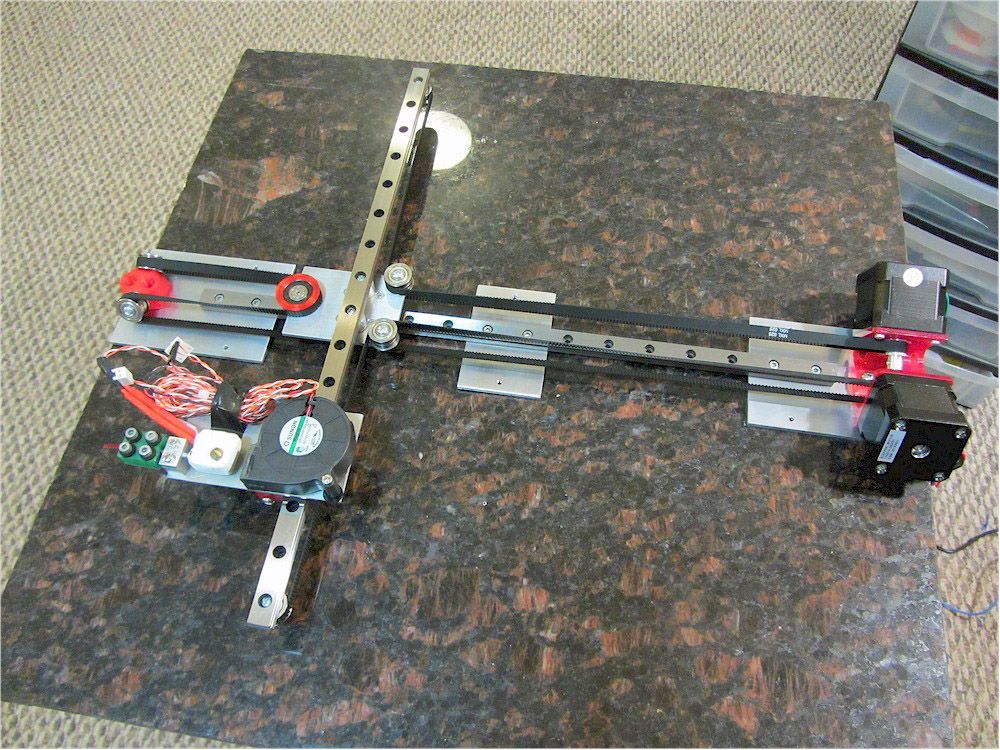 Eventually, Tiko had too much technical debt to pay off. It certainly didn’t help that this was a 3D printer selling for a bargain-basement price, either. There’s only so much margin on a $200 printer, and from the start there wasn’t much left over for the engineering needed to make a good, cheap 3D printer.
Eventually, Tiko had too much technical debt to pay off. It certainly didn’t help that this was a 3D printer selling for a bargain-basement price, either. There’s only so much margin on a $200 printer, and from the start there wasn’t much left over for the engineering needed to make a good, cheap 3D printer.
The Future of Tiko
By the end of 2016, Tiko was effectively dead. Last week, they gave up, shutting down production, and refusing to refund backers. Tiko has even refused refunds on shipping costs, a move that led to an online petition and — get this — a Kickstarter campaign to start a class action lawsuit against Tiko. Tiko is dead, although they are actively pursuing additional investors.
Far too often we look at Kickstarters from an engineering perspective. What’s missing in these discussions is a look at Kickstarters from a business perspective. What Tiko has done is out-innovated themselves. They came up with a rather remarkable system for the frame of a 3D printer, but one that isn’t quite right for a hardware startup. They developed brand new hardware for the 3D printer community but backed themselves into a corner when their engineering team couldn’t keep up. They spent all their money buying components before their design was finalized. These aren’t poor engineering decisions, they’re poor business decisions.
They developed brand new hardware for the 3D printer community but backed themselves into a corner when their engineering team couldn’t keep up. They spent all their money buying components before their design was finalized. These aren’t poor engineering decisions, they’re poor business decisions.
Twelve thousand people have spent $200 (plus about $60 in shipping) on a printer they won’t receive. Four thousand people have a printer that doesn’t live up to their expectations. The Tiko team has a three million dollar failure hanging over their heads. No one is happy with this situation. Yet it can all be traced back to a single problem. This is what you get when you innovate too much.
5 Best Tiko 3D Printer Review – Alternatives 2023
On March 30, 2015, a Kickstarter project was opened to create a revolutionary new 3D printer. One month later, in April 2015, the Kickstarter had raised $2,950,874 from 16,538 backers who put up at least $179 each. Shipping was estimated to start in November 2015, approximately seven months later. The printer was going to be known as the Tiko Unibody 3D Printer.
The printer was going to be known as the Tiko Unibody 3D Printer.
The designers of this printer were visionaries in every sense of the word. The Tiko 3D printer what the creators of the term "state-of-the-art" had in mind when they coined the phrase. Here are some of the planned specifications.
- The maximum print volume was supposed to be 138.3 cubic inches.
- The shape of the print area wouldn't have been the usual rectangle or circle. Instead, it would have been triangular but with rounded corners. The height would have been 4.9 inches. If you were printing something with a cylindrical shape, the diameter of that cylinder could have been as large as 4.9 inches.
- The layer resolution was supposed to be 50 to 250 microns.
- The printing zone would have been enclosed.
- The print bed would have been made of a flexible plastic. That would have made it easy to pop off the printed item without damaging it.
- Tiko would have been able to connect to Wi-Fi so that you could print from virtually anywhere, including a smartphone.
 If Wi-Fi was not available, you could have used the printer to create a wireless access point. This would have let you print directly from your computer to the printer.
If Wi-Fi was not available, you could have used the printer to create a wireless access point. This would have let you print directly from your computer to the printer. - If the unit was ever jarred or moved while printing, a built-in accelerometer would have sensed this and shut the Tiko down automatically.
- The accelerometer would have also had a role in the automatic calibration process.
This was your big chance to participate in the development of cutting-edge technology. For a mere $179, you could have contributed to a Kickstarter project and gotten a new type of 3D printer, one that would have made IT history.
The first shipment (from Hong Kong) went out in December 2016. That was 13 months after the initial expected ship date. Those units, once they were set up by the new owners, had problems. By February 22, 2017, the project was over. The Tiko 3D printer became someone’s broken dream. There were subsequent efforts to revive the brand, but nothing came of them. In the end, the biggest problem was probably not the design or planning. It was probably that the project was underfunded and couldn’t survive the bad times.
In the end, the biggest problem was probably not the design or planning. It was probably that the project was underfunded and couldn’t survive the bad times.
Even though their $179 investment was gone, those who contributed to the Tiko Kickstarter project were offered an inexpensive way to acquire a 3D printer. The CEO of M3D offered anyone who lost money on the Tiko Kickstarter the opportunity to purchase a Micro 3D Printer for a discounted price of $199. It was a good deal for anyone who accepted the offer and a smart way for M3D to expand its customer base.
There are plenty of other options available for those who were hoping to purchase a Tiko 3D printer. We will list some of those alternatives for you. But first, here is some background information on 3D printers.
| Preview | Product | Price | |
|---|---|---|---|
Monoprice Mini Delta v2 3D Printer (110 x 120mm) Heated Build Plate,.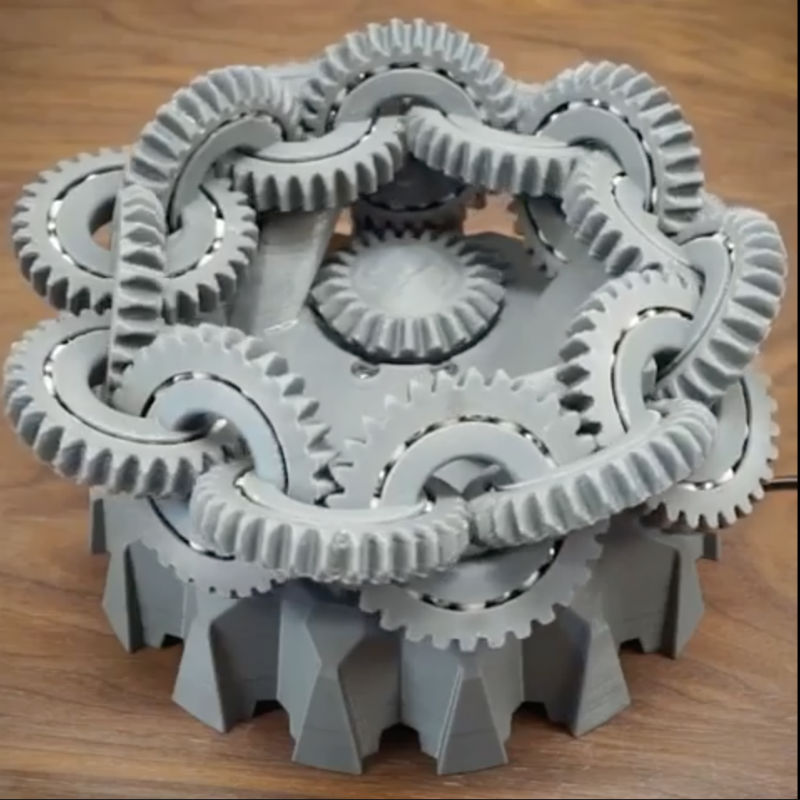 .. .. | $244.56 | Buy on Amazon | |
| M3D Micro+ Desktop 3D Printer for Home, Work, and School Use, Includes... | Buy on Amazon | ||
| Promotion! Print-Rite CoLiDo Delta 3D Printer Kossel Kit D1315 Plus... | Buy on Amazon |
Image by Karolina Grabowska from Pixabay
The printers we reviewed were chosen based on price.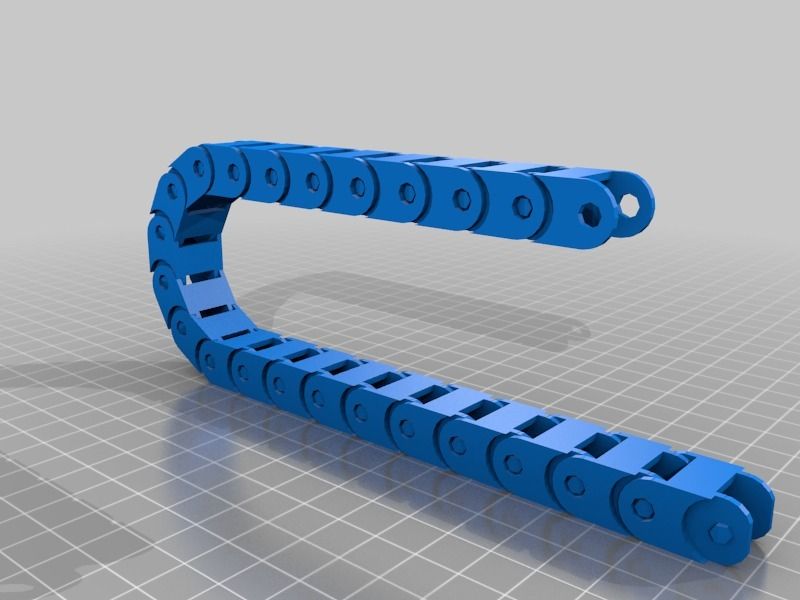 We were looking for printers at a price close to the $179 that would have been spent on the Tiko. Quite a bit of time has passed since the beginning of the Tiko project. In that time, technology has marched on. It is reasonable to expect that since then, prices have dropped, and functionality has increased. It is interesting to see how some of the ideas in the Tiko design have made it into currently available printers.
We were looking for printers at a price close to the $179 that would have been spent on the Tiko. Quite a bit of time has passed since the beginning of the Tiko project. In that time, technology has marched on. It is reasonable to expect that since then, prices have dropped, and functionality has increased. It is interesting to see how some of the ideas in the Tiko design have made it into currently available printers.
All the printers reviewed here are delivered completely assembled. There are many more available in this price range that require assembly. Some even come in the form of a kit, which sounds like an extreme form of assembly. If you are good with your hands, have a sense of adventure and have the patience of a saint, you might do well to find a kit. This will give you lot more printer for the money.
Overall Price Range of This ProductImage by Lutz Peter from Pixabay
In general, the cost of filament-based 3D printers ranges from the low hundreds to many thousands of dollars. Because we are looking to replace a $179 Tiko printer, we have decided to limit our price range to between $150 and $350.
Because we are looking to replace a $179 Tiko printer, we have decided to limit our price range to between $150 and $350.
Monoprice Mini Delta 3D Printer
Monoprice Mini Delta v2 3D Printer (110 x 120mm) Heated Build Plate,...
- Touchscreen Control, Updated Firmware and UI: You spoke and we listened. Larger icons, clear and concise instructions,...
- Fully assembled: the mp mini delta 3D printer comes fully assembled, ready to print out of the box
- PoloPrint Pro Wi-Fi Connection: Connect to the printer over Wi Fi using the updated PoloPrint Pro app for iOS or...
Price | $159 |
Setup | Assembled |
Interface | Wi-Fi, USB, microSD |
Display | LCD |
Technology | FFF |
Print Area | 4. |
Enclosed | No |
Heated Bed | Yes |
Bed Leveling | Auto |
Nozzle Size | .04 mm |
Extruders | 1 |
Software Inc. | Cura, supports Windows XP or later, Mac OS X (10. |
Resolution | 50 micron |
Dimensions | 14.2” x 10.4” x 16.9” |
Weight | 30.6 lbs |
Includes | USB cable, microSD card, power adapter, cord |
Where To Buy | Monoprice, Amazon |
Warranty | 30-day money back guarantee, one year for repair of manufacturer’s defects |
This low-end printer has it all. It works right out of the box and, except for its lack of enclosure, it has all the great features of higher-end systems. Wi-Fi connectivity allows you to cut the leash to your computer. It only addresses smaller print projects, but if you can work with that limitation, this printer is for you. This model is also worth considering if you are looking to buy your first 3D printer.
It works right out of the box and, except for its lack of enclosure, it has all the great features of higher-end systems. Wi-Fi connectivity allows you to cut the leash to your computer. It only addresses smaller print projects, but if you can work with that limitation, this printer is for you. This model is also worth considering if you are looking to buy your first 3D printer.
- Wi-Fi interface
- SD card
- Excellent features at a low cost
- Heated bed
M3D Micro+ Desktop 3D Printer for Home, Work, and School Use, Includes...
Price | $349 |
Setup | Assembled |
Interface | USB |
Display | No |
Technology | FFF |
Print Area | 4. |
Enclosed | No |
Heated Bed | No |
Bed Leveling | Auto |
Nozzle Size | 0.35 mm |
Extruders | 1 |
Software Inc. | M3D |
Resolution | 50 to 350 microns |
Dimensions | 7. |
Weight | 4.4 lbs |
Includes | M3D software, USB cable, power adapter |
Where To Buy | Amazon, M3D website |
Warranty | Three months for manufacturer’s defects |
- Lightweight
- No Display
da Vinci Mini Wireless 3D Printer
No products found.
Price | $200 |
Setup | Assembled |
Interface | USB, Wi-Fi |
Display | No |
Technology | FFF |
Print Area | 5. |
Enclosed | No |
Heated Bed | No |
Bed Leveling | Auto |
Nozzle Size | .04 mm |
Extruders | 1 |
Software Inc. | XYZware, supports Windows 7 and above, Mac OSX 10. above |
Resolution | 100 microns |
Dimensions | 15.4” x 13.2” x 14.2” |
Weight | 18 lbs |
Includes | Starter filament |
Where To Buy | XYZ Printing, Amazon |
Warranty | Undetermined |
This is another excellent entry-level printer that works right out of the box. Wi-Fi connectivity is a big plus, as is that automatic bed-leveling feature. The resolution of 100 microns is good, but not great. It only runs filaments available from XYZ Printers. The proprietary XYZware software is provided.
Wi-Fi connectivity is a big plus, as is that automatic bed-leveling feature. The resolution of 100 microns is good, but not great. It only runs filaments available from XYZ Printers. The proprietary XYZware software is provided.
- Wi-Fi interface
- Uses only XYZ Printing filaments
- Resolution
HopeWant Desktop 3D Printer
No products found.
This seems to be a good entry-level printer. Remove it from the shipping carton, and it’s ready to go. It prints either from the computer or the SD card (TF card).
- SD Card
- Price
- No Display
- Resolution
Print-Rite CoLiDo Delta 3D Printer
Promotion! Print-Rite CoLiDo Delta 3D Printer Kossel Kit D1315 Plus...
- Fast print: Delta design, 3 axles moving at the same time, 30% faster than XYZ printing technology
- 0.
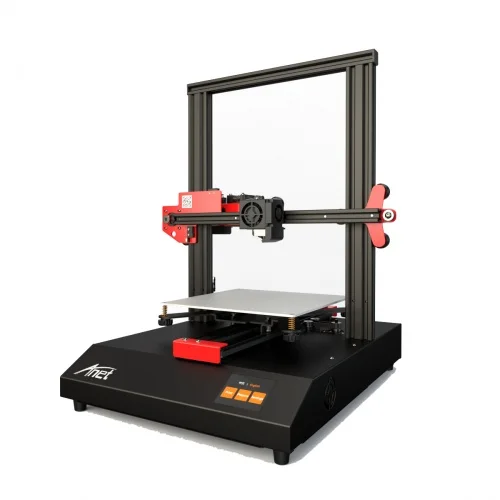 05 mm layer resolution printing quality, two times more precise than other low cost 3d printers, which usually print...
05 mm layer resolution printing quality, two times more precise than other low cost 3d printers, which usually print... - Ready to print, fully assembled and calibrated. Compact design with premium quality parts, portable machine with...
Price | $269 |
Setup | Assembled |
Interface | USB |
Display | No |
Technology | FDM |
Print Area | 5” diameter x 5. |
Enclosed | No |
Heated Bed | No |
Bed Leveling | No |
Nozzle Size | .04 mm |
Extruders | 1 |
Software Inc. | Repetier-Host, supports Windows 7 and above, Mac |
Resolution | 50 microns |
Dimensions | 9. |
Weight | 12 lbs |
Includes | Flash drive, USB cable, adapter, filament |
Where To Buy | Amazon, CoLiDo |
Warranty | 30-day return policy, one-year international warranty |
The price of this unit is at the high end of our range but, as always, you get what you pay for. This printer is different from the others in that it is configured for a circular print area. It is easy to set up, and it prints quickly due to its three-axis parallel movement system. This is an excellent printer for a beginner, but the quality and consistency are good enough for professional applications. At 30 watts, it is economical to operate.
This is an excellent printer for a beginner, but the quality and consistency are good enough for professional applications. At 30 watts, it is economical to operate.
- Fast printing
- Low power
- No Display
- Resolution
The Monoprice Mini Delta 3D printer was the clear winner here. For a printer with its features, the price is almost unbelievable. Wi-Fi connectivity and use of SD cards to store print files make it very user friendly. The heated bed also makes this the only printer on the list that could be comfortably used in a professional setting.
Featured Image: Image by ZMorph4D from Pixabay
Last update on 2021-12-12 at 04:27 / Affiliate links / Images from Amazon Product Advertising API
Tiko "one-piece" 3D printer for only $179
TECHNOLOGIES
Alex Sci 1 comment
If you've decided to print your own model from your art and don't know how to do it, then meet Tiko's new budget 3D printer seeking Kickstarter funding that combines an interesting closed design with minimized manufacturing costs, without sacrificing print quality.
The skeleton is usually one of the most expensive components in a 3D printer. To ensure print accuracy, the multi-layer frame must be fine-tuned and then regularly aligned throughout its life cycle to ensure consistent performance. This raises costs and takes the user a long time to calibrate it before they can start using their printer.
Tico gets rid of these complications with a nested "one-piece" design that includes a pre-aligned frame skeleton on the inside of its frame. According to its creators, the result of their development is a chassis that is strong and light, which is virtually impossible to move, making it possible to 3D print with an accuracy of 50 microns, despite the absence of high-precision components.
In general, Tico maintains a high level of print quality while striving to reduce costs. In addition to the unique design of its structure that completely isolates the print from the external environment, Tiko has a small heat-insulating titanium nozzle of an ultra-compact liquefier, which saves the extruded PLA from the need for active cooling and replacement with expensive and loud heat fans.
For print safety there is an accelerometer (which has the primary function of automatically calibrating the printer), it also serves as a safety valve, interrupting the printing process when the device is disturbed. One of the standard 1kg diameter 1.75mm PLA spools is inserted into the top of the printer so you can experiment with different materials.
One of the standard 1kg diameter 1.75mm PLA spools is inserted into the top of the printer so you can experiment with different materials.
The ability to connect with Tico is implemented via Wi-Fi. Browser-based software for increased mobility. Another interesting feature is the printer's ability, with the permission of the user, to evaluate its own level of performance and pass the data back to its developers to be used to improve the software.
[youtube]https://youtu.be/5INdbXX0oYU[/youtube]
Tiko measures 390 x 221 x 237mm, weighs 1.7kg excluding filament, and has a printable volume of 2.27 liters, with print accuracy up to 50 microns.
In one day of his Kickstarter campaign, the Tiko 3D printer has already surpassed its $100,000 crowdfunding goal. The printer is available now with a $99 minimum deposit, which includes a 1kg spool of PLA filament in its kit.
Original source: Kickstarter.com
3D Printing3D PrinterkickstarterTiko 3D PrinterAdd Mind Stove and Listen to Clouds / Smart Things
⇡#Tiko is a solid, reliable and cheap 3D printer
There are a lot of 3D printers on Kickstarter. Every week, a project starts that focuses on 3D printing and is ready to take one or another characteristic - compactness, accuracy, speed, ease of use, reliability - to a new level. Due to the number of such projects, sooner or later you stop paying attention to them. But this does not concern Tiko: the project raised almost $3 million against the stated goal of $100,000.
Every week, a project starts that focuses on 3D printing and is ready to take one or another characteristic - compactness, accuracy, speed, ease of use, reliability - to a new level. Due to the number of such projects, sooner or later you stop paying attention to them. But this does not concern Tiko: the project raised almost $3 million against the stated goal of $100,000.
The question immediately arises: what is it about Tiko that other printers don't? The first thing the creators say is reliability. The body of the Tiko consists of a single piece, not many connected elements. This ensures that there are no problems with the calibration, adjustment and constant repair of the printer. In the rest of the 3D printers, according to the developers, something constantly leaves, disconnects, fails, or at least warps - and you have to spend almost as much time on printing as on developing a printed product. Tiko should not have such problems. All the insides of the printer are hidden under a one-piece housing that isolates the print area and the mechanism itself.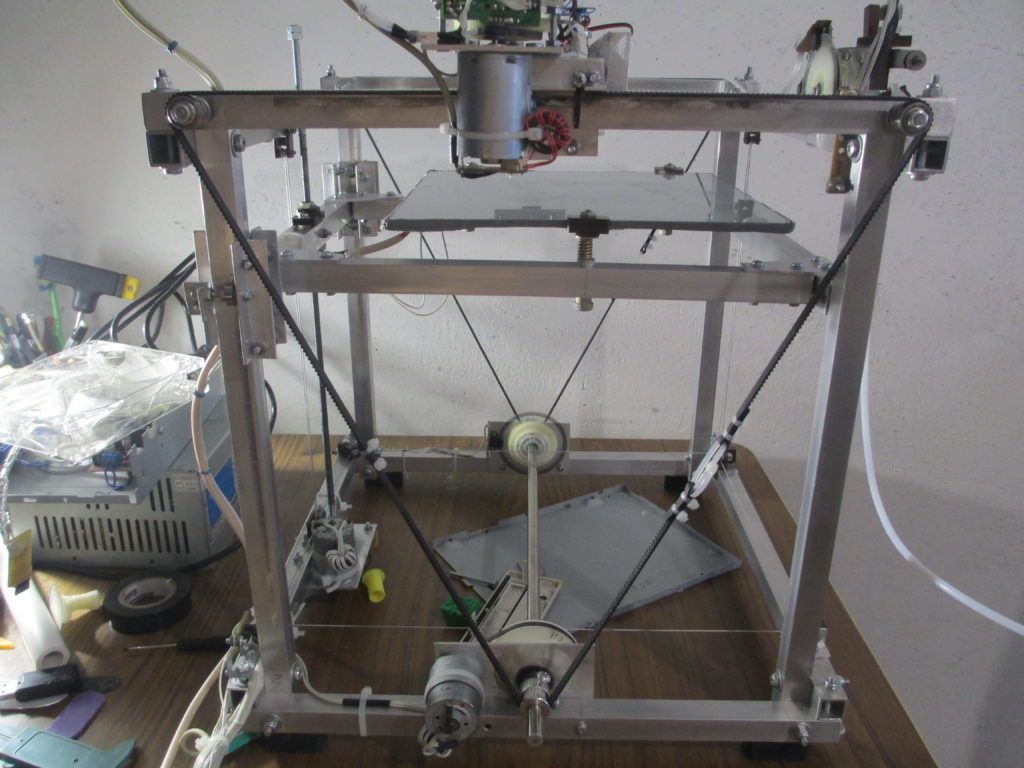 The body is strong enough - it can even withstand the weight of a person.
The body is strong enough - it can even withstand the weight of a person.
The second key benefit is the price: $179. Complete with a printer for this money, the buyer receives a roll of plastic wire for printing. If you need a printer to print your products and, say, you sell collectible toys or figurines, then the price of the printer can be recouped for a couple of sales. To the question "Why is it so cheap?" the developers answered: because the materials are cheap, the creation of a one-piece body is not expensive and simply because they can do it, and let the competitors bite their elbows.
For direct printing, a mechanism is used that can move as desired during operation. The parallel arm arrangement exhibits exceptional repeatability without the use of precision guides and linear bearings. This means the Tiko is built using consumer grade tolerances and relatively simple parts, rather than the expensive CNC machined components found in other 3D printers. Most 3D printers use an arrangement of belts, pulleys, and idlers.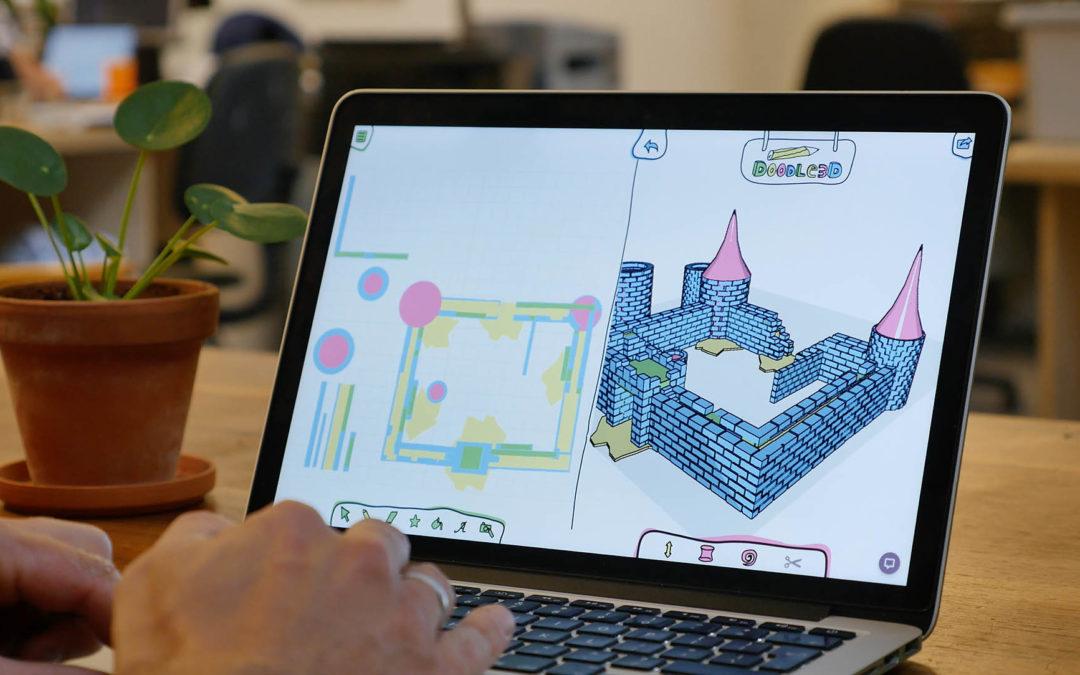 Instead, Tiko's developers have created their own direct drive system, in which the engines are mounted on "wagons" that drive directly along the rails. The nozzle is made of titanium and is unique in its kind. The ventilation system does not interfere with printing and perfectly cools the part. Printing accuracy is not so great - 200 microns, but, according to the assurances of the creators, thanks to the print quality, Tiko is not inferior to printers with an accuracy of up to 50 microns.
Instead, Tiko's developers have created their own direct drive system, in which the engines are mounted on "wagons" that drive directly along the rails. The nozzle is made of titanium and is unique in its kind. The ventilation system does not interfere with printing and perfectly cools the part. Printing accuracy is not so great - 200 microns, but, according to the assurances of the creators, thanks to the print quality, Tiko is not inferior to printers with an accuracy of up to 50 microns.
Specifications Tiko Accuracy 200 micron Materials Nylon, PLA, ABS, HIPS Weight 1.7 kg Dimensions 390 × 237 × 221 mm Interface WiFi Maximum temperature 250°C Working area diameter 125 mm Price $179
You can connect to Tiko via Wi-Fi, the printer even creates its own point specifically for printing. If the connection with the printer breaks, this will not stop printing - the information will already be stored locally on the printer. Well, the last nice feature of Tiko is that this printer is easy to move from place to place, because without taking into account the materials for printing it weighs only 1.7 kg.
If the connection with the printer breaks, this will not stop printing - the information will already be stored locally on the printer. Well, the last nice feature of Tiko is that this printer is easy to move from place to place, because without taking into account the materials for printing it weighs only 1.7 kg.
As stated at the beginning, the project raised nearly $3 million. Over 16,000 Kickstarter users have ordered Tiko. The delivery of the first printers will be carried out in October, but if you order a printer now, you will definitely not see it before March next year - the order limits for October, November, December, January and February have already been exhausted. At the time of publication of the article, the Kickstarter campaign had just ended.
⇡#Aivvy Q - smart headphones that cache personalized music
One of the most interesting Kickstarter projects for the mass user is headphones that cache music. Even a little more: the headphones analyze what you listen to and cache the music that you will like.
Why is Aivvy Q interesting? They are a player and headphones in one device - however, few people are surprised by this now. But they also allow you to forget that you need to download music from the Internet or transfer from discs to the player. You don't even have to spend hours and days looking for really worthwhile tracks for your collection.
Headphones communicate directly with the cloud. To use them, you do not need a constant connection to the Web - all music is cached in the device's memory during recharging. Music starts playing as soon as you put on your headphones. All tracks will be stored in the cloud at a bit rate of at least 320 kbps, which will allow you to enjoy music in CD-like quality. Batteries should last for 40 hours. This is quite a lot, but not so much that the stock of music could become outdated.
Forced recharge will update your playlist. The headphones also boast support for active noise cancellation.
Specifications Aivvy Q Frequency response 20-20000 Hz Materials Plastic, leather, aluminum Interface Ultra Low Power Wi-Fi 2.  4 GHz, Bluetooth LE
4 GHz, Bluetooth LE Memory 32 GB Sensitivity 117 dB Sizes FLAC, mp3, ape, wma, aac, wav Dimensions 163 x 137 x 82 mm, 255 grams Price $299
Playback is controlled by touching the headphones. You can mark a track as your favourite, scroll through tracks and change channels by switching between certain styles or sheets in your collection. Everything you do affects how your headphones see your taste in music. They marked a track as a favorite - they received a recommendation to listen to a similar one, they skipped a track - they cut off the excess from their future playlist. All the details about the recommendation mechanism are not known, but the system should take into account, among other things, when and where you performed a certain action.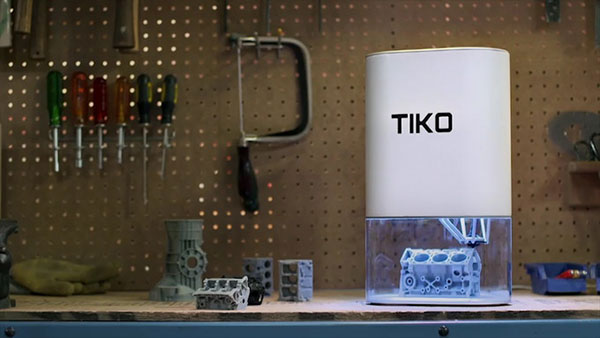
Headphones seem like magic, but let's understand the whole system a bit. How long does it take for a development company to get the rights to music to somehow match the level of iTunes and Google Play? And how much money would it take? If the creators opened a campaign to raise funds for the production of headphones, then where will they get the money for the content? Otherwise, users of the service will have to be content with mediocre music. The creators do not disclose any details in this area. The entire system of intelligent music recommendations can only be built on a sufficiently large sample. Not only should the number of users of the system be in the millions, it will also take some time to accumulate enough information to avoid the banal recommendations of AC/DC ↔ Metallica ↔ Slayer, Kino ↔ Grebenshchikov ↔ Time Machine. It took Last.FM many years to give really good recommendations that you don't want to spit on. In questions to the project, the topic of whether the headphones are relevant somewhere other than the USA (the homeland of the creators) was also raised.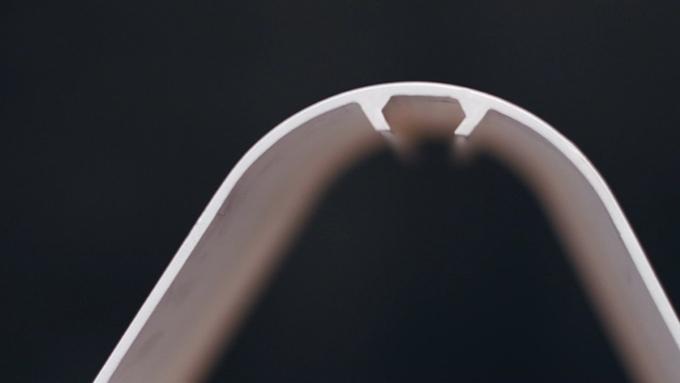 In response, the developers promised to give recommendations depending on the location of the listener. In general terms, if you are from Russia, you will be recommended music that is relevant for Russia, including our performers.
In response, the developers promised to give recommendations depending on the location of the listener. In general terms, if you are from Russia, you will be recommended music that is relevant for Russia, including our performers.
Overall, Aivvy Q seems like a crude product, although the concept is great. It is a pity, but many aspects of the operation of the entire system as a whole are not disclosed. It doesn't look like the project will actually get a full life, rather than end up with first deliveries, as is often the case with Kickstarter projects. The price of the headphones is $300 (one and a half 3D printers) - and it will be justified only if the music recommendation service really works as it should. After all, Aivvy Q can be used as regular headphones, but for just headphones with such technical characteristics $ 300 is too high a price. At the time of this writing, the project was finishing a campaign that was successful, having collected more than 180 thousand dollars instead of 125.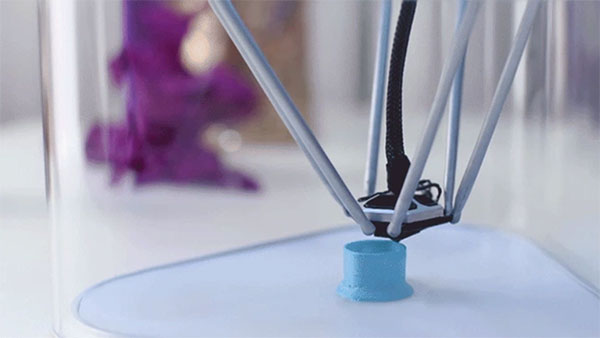 Delivery of the first headphones is scheduled for October this year.
Delivery of the first headphones is scheduled for October this year.
⇡#Meld - creating a smart kitchen
A large number of Kickstarter devices offer not to buy something completely new, but to improve what you already have. This option almost always turns out to be cheaper and suitable for everyone, because not everyone is ready to immediately dive into the world of high technologies - many want to approach this gradually.
Let's say, what would be so technologically advanced in the kitchen? You can put Meld there. Meld is a cooker device. It doesn't matter if it's gas or electric. You install Meld instead of a temperature control knob - and now your mobile phone can control the temperature instead of you. Installation takes only half a minute, and, according to the video, almost everyone can handle it. Without changing anything drastically in the kitchen, without buying new appliances, you get a “smart” stove, which will be controlled by artificial intelligence.
Meld consists of a handle on the stove and a thermometer that is mounted on the pot. It is important to note that at the moment this whole system only works with pots - Meld will not be able to help you fry something, because it is simply not able to monitor the temperature in the pan. Such a limitation sharply reduces the relevance of the invention. The creators emphasize that you can cook the perfect soup or sauce, make stews, french fries (in oil) or caramel. Much attention was also paid to the problem of boiling eggs in a bag. Indeed, this is an intricate process that requires skill or a clear algorithm of actions related to the cooking temperature. But is it really worth buying a separate device for this?
The creators of Meld take the trick: a real chef can cook anything on anything - and the video shows how to cook a perfect pot-rare steak using Meld. The steak is simply brought to the desired state by cooking in a thermal bag, and then only browned in a pan. If you think in this way, then, of course, the possibilities of a “smart” stove are expanding.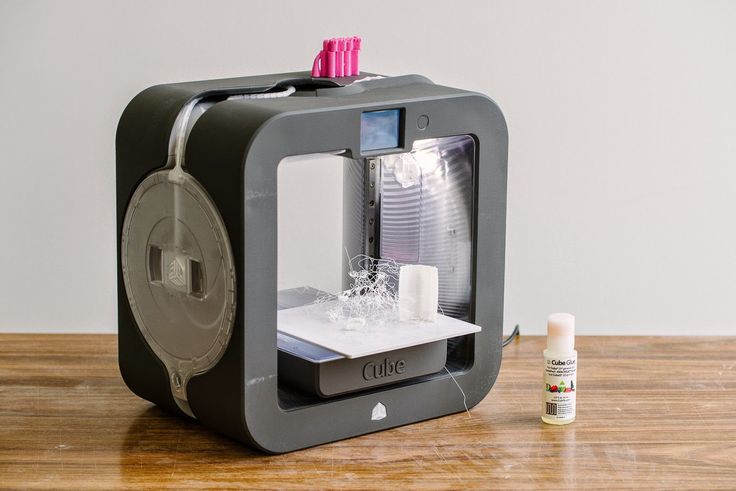
Specifications Meld Power 4 + 1 AAA batteries Application platforms Android, iOS; later possibly Windows Phone Interface Bluetooth 4.0 LE Materials Handle - protected plastic, thermometer - metal Optional Water protection, auto-off Dimensions Pen - 62 x 45 mm, thermometer - 300 x 24 mm Price 129 dollars
The system is controlled using a smartphone or tablet and a special application. The application, of course, contains a lot of ready-made recipes - all that remains is to choose what to cook, collect the ingredients, put the pan on the fire and fix the thermometer.


 3” x 4.3” x 4.7”
3” x 4.3” x 4.7”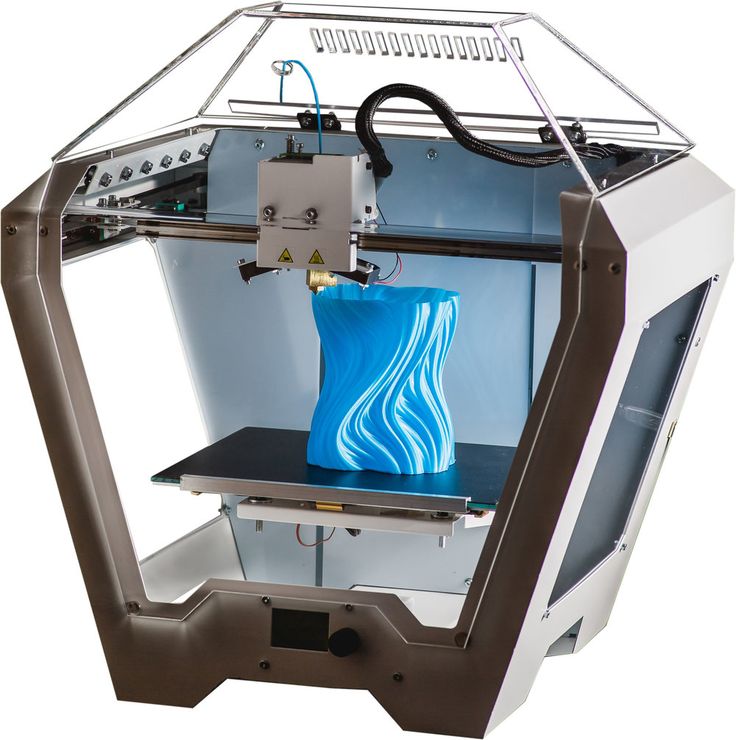 6 64-bit)
6 64-bit) 3” x 4.5” x 4.6”
3” x 4.5” x 4.6” 3” x 7.3” x 7.3”
3” x 7.3” x 7.3”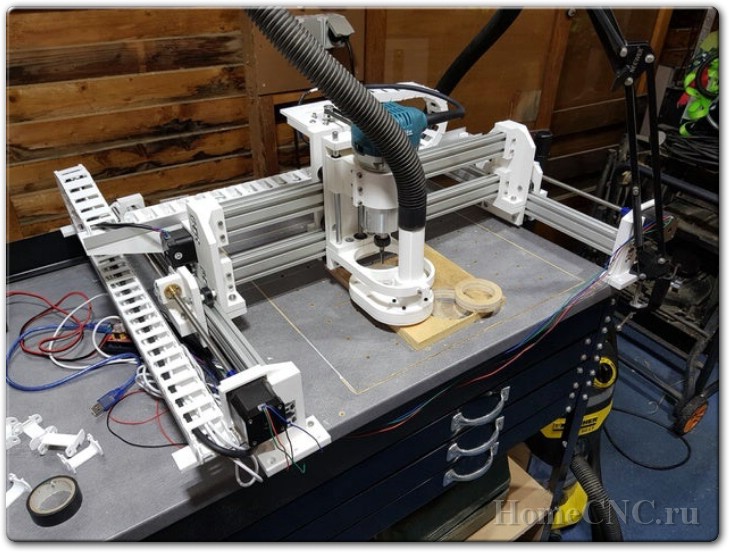 9” x 5.9” x 5.9”
9” x 5.9” x 5.9”  8 and
8 and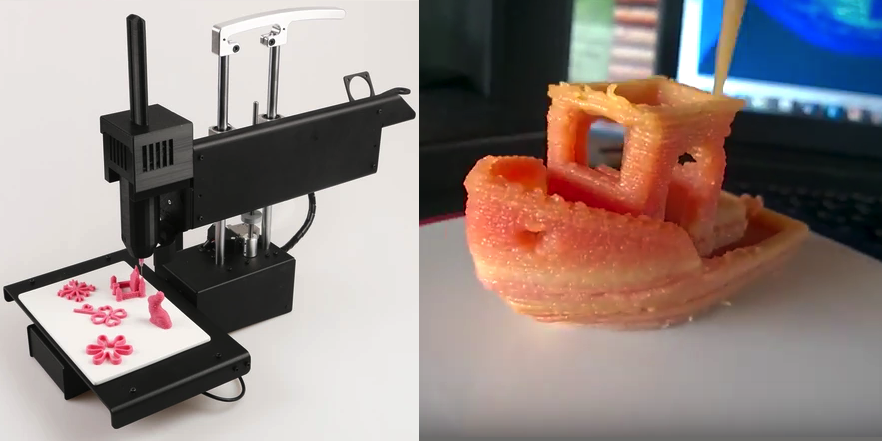 9” high
9” high 9” diameter x 17.5 high
9” diameter x 17.5 high